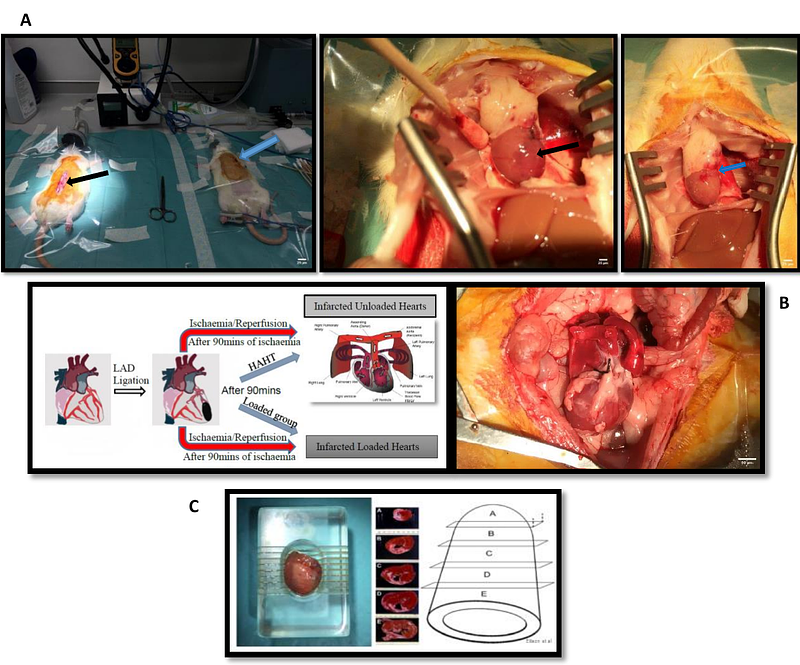Mechanical unloading coupled with coronary reperfusion reduces fibrosis and stimulates cardiomyocyte proliferation after myocardial infarction

Mechanical unloading coupled with coronary reperfusion reduces fibrosis and stimulates cardiomyocyte proliferation after myocardial infarction
Bello, S. O.; Singh, C.; Perbellini, F.; Punjabi, P. P.; Terracciano, C. M.
AbstractIntroduction: Percutaneous left ventricular assist devices (pLVADs) have become essential tools during coronary reperfusion in high risk PCI. Significant reduction in infarct propagation is observed when mechanical unloading is coupled with reperfusion, but little is known of the effect this reduction in wall stress and extracellular matrix with pLVADs have on the hearts regenerative capacity. Objective: This study investigates the effect coronary reperfusion coupled with mechanical unloading has on myocardial fibrosis, and the impact these changes in extracellular matrix have on the hearts regenerative potential. Methods: MI was induced by coronary artery ligation in Lewis rats. Hearts underwent permanent coronary ligation (AMI) or were reperfused after 90 minutes (AMI/R). In each group, hearts were either loaded (AMI-L or AMI/R-L) or unloaded (AMI-U or AMI/R-U). In the unloaded subgroup, the infarcted hearts were explanted after 90 minutes and transplanted into the abdomen of healthy recipients via heterotopic abdominal heart-lung transplantation. The recipient\'s heart acted as control. Hearts were analysed on day 7. Results: 30 hearts were studied. In the permanent ligation group, fibrosis increased in both the loaded and unloaded hearts with no significant rise in cardiomyocyte proliferation. After coronary reperfusion, there was a decrease in fibrosis with mechanical unloading and cardiomyocyte proliferation rose significantly (AMI/R-L vs AMI/R-U p= 0.0001). Cardiomyocyte proliferative rate in the loaded and unloaded hearts was 0.6%, and 3.7% respectively after permanent ligation, and 0.5%, and 10.4% respectively after coronary reperfusion. Conclusion: These data show that coronary reperfusion coupled with mechanical unloading reduces myocardial fibrosis and upregulates cardiomyocyte proliferation after myocardial infarction.